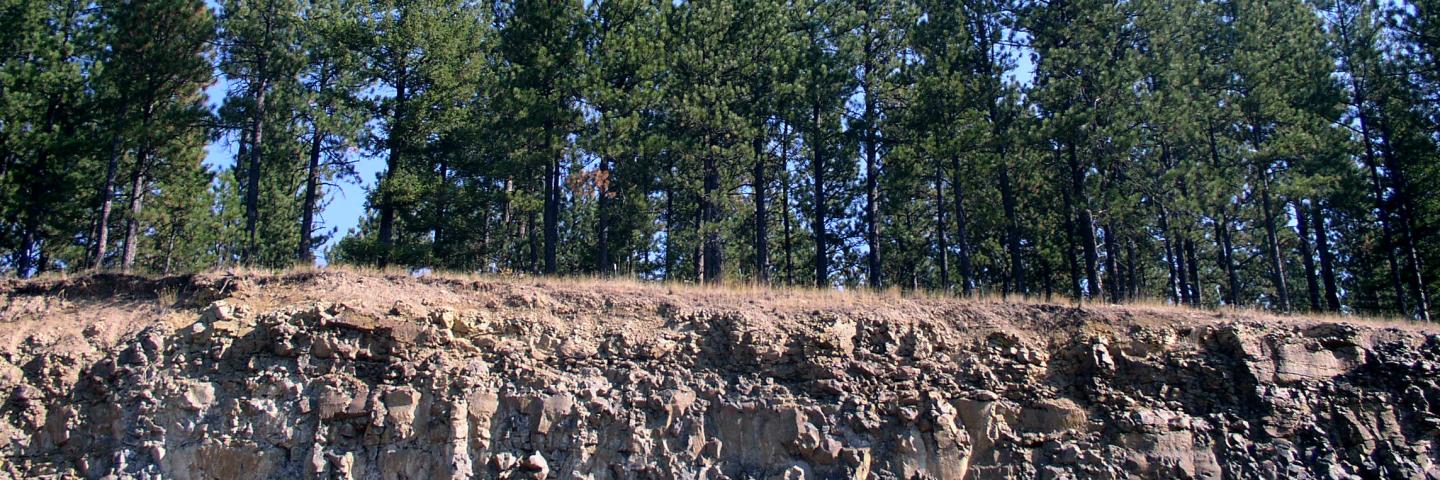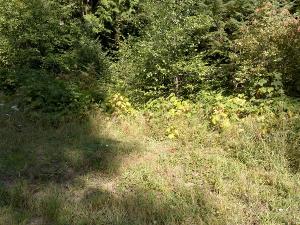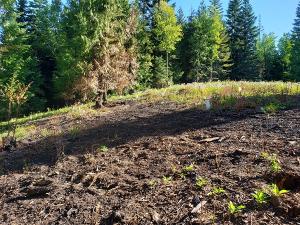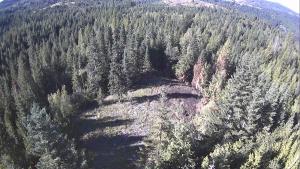A Little Conservation Can Help Stop a Forest Fire in its Tracks

There is an old adage that says “An ounce of prevention is worth a pound of cure.” This is especially true when it comes to conservation and forest health.
There is an old adage that says “An ounce of prevention is worth a pound of cure.” This is especially true when it comes to conservation and forest health.
Let’s look at an example provided by Soil Conservation Technician Todd Higens, a partner employee in the Coeur d’Alene Field Office through the Idaho Soil and Water Conservation Commission.

“We have a client named Kurt Koetter who is a retired teacher and who is still very active in teaching children about forestry,” Higens said. Koetter owns the Wood Wizard Tree Farm, 104 acres of forest land on the northwest slope of Rathdrum Mountain in Kootenai County.
He’s also a man who is proactive in the management of his land, especially in terms of reducing the risk of catastrophic wildfire.
Beginning in 2017, Koetter has applied for financial assistance from NRCS to complete a 3-acre fuel break and 11 acres of forest stand improvement through woody residue treatment. He received that assistance through the Greater Spokane Watershed Regional Conservation Partnership Program (RCPP) project which promotes forest health and water quality. RCPP helps NRCS leverage its Environmental Quality Incentive Program funds through partnerships in order to increase its impact and acreage addressed in a targeted area.
In 2018, he contracted with NRCS through RCPP to clear out a diseased and dead stand of stunted grand fir and small diameter, dead quaking aspen trees that covered about an acre. The understory of this stand was dense with fire-prone ocean spray, ninebark and mountain maple. Once the stand was cleared, the acre was replanted with an even mix of Western Larch and White Pine.

This planned conservation was the right move. During an intense storm in early August of this year, lightning hit a tree on the downslope perimeter of the 1-acre area that had been cleared and replanted. Because of the lack of fuels after the brush clearing, the fire stayed in the general area of the lighting strike and was quickly put out by the Idaho Department of Lands with a single bucket of water from a helicopter. Had the lightning hit before this work had been done, the resulting fire could have been a nightmare due to the heavy ground and ladder fuels on a steep slope. Thanks to Koetter’s efforts and NRCS assistance, only two trees were lost from the fire.
According to Higens, Koetter plans on applying for RCPP-EQIP again for FY2020 to complete another 5 to 10 acres of pre-commercial thinning to be done through a combination of hand tools and mastication.
“He has be diligent in utilizing RCPP-EQIP assistance for the last few years to help maintain the health of his forest,” Higens noted. “It makes a difference for him and for his neighbors. Because he is proactive in implementing conservation practices where it makes sense, he has reduced the risk of wildfire to his property and the property around his operation.”

“As a forest land owner involved in re-establishing the proper species on property that was heavily logged, NRCS has been a critical partner,” Koetter said. “Without the matching funds obtained from [NRCS], the expense of thinning, masticating, and planting seedlings would make it impossible for our tree farm to accomplish our objectives. The funds necessary to complete these activities are out of reach for most private forest owners, especially those of us who did not reap the benefits of the timber that was harvested before acquiring the land. I, for one, really appreciate how the Farm Bill applies to tree farms as well as other agricultural pursuits. This is a program that really helps citizens, the economy, and the forest habitat.”
Koetter and Higens have demonstrated that small systematic steps can be just as effective as large scale efforts when addressing the issue of forest health on private timberlands.
“Curtis [Elke] had once asked me if I felt our forestry work was serving the greater good in North Idaho,” said Higens. “It’s stories like this one that make me strongly feel that we do play our part in conservation.”


